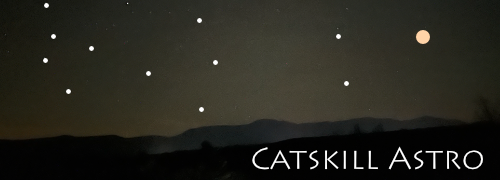Arp’s Peculiar Galaxies
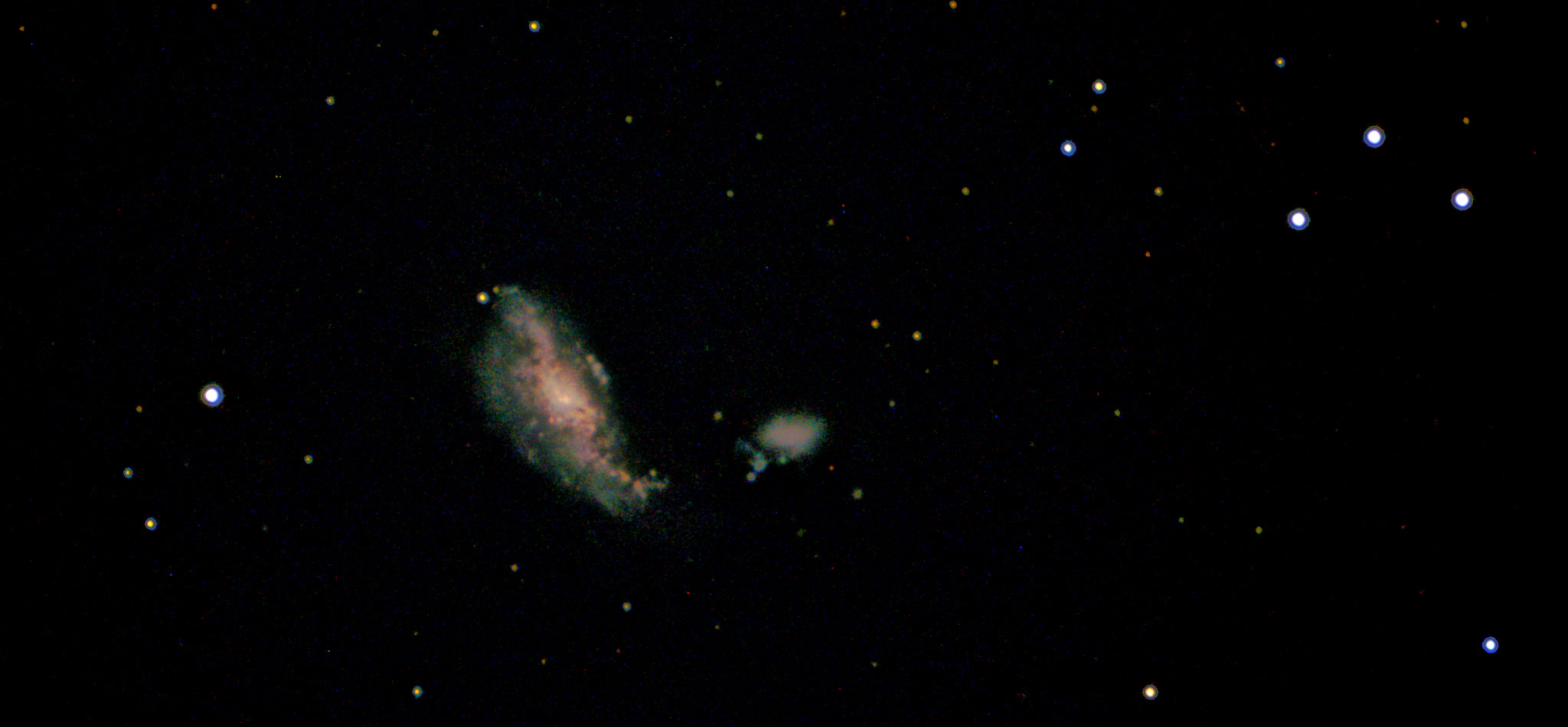
Page 2 of 16
Arp observations 11-20 of 155 total to date.
| Thumbnail | Title/link | Arp Category | Date Observed | Observer Description |
|---|---|---|---|---|
 |
Arp 19 / NGC 145 | Three-armed spiral galaxies | 2025-01-03 20:50:00 | At magnitude 10.3 and 1.8x1.3 arc minutes this is a challenging galaxy to observe with a small telescope. Overall the galaxy is circular, but extremely dim and the disc appears as background dust in both my capture and Arp's. Presumably, if you exclude the center bar, two of the three arms include the long, circular arm across the top and the nearly vertical descending bar at the right. The third arm is a bit more ambiguous, but presumably is the short descending bar to the left. |
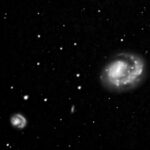 |
Arp 23 / NGC 4618 | One-armed spiral galaxies | 2025-05-17 05:02:33 | An unexpecgted observation: forecast was mostly cloudy but it turned beautifully clear around 9 PM and stayed that way until about midnight. |
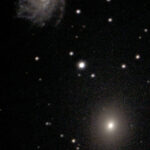 |
Arp 25 / NGC 2276 | Spiral galaxies with one heavy arm | 2024-04-15 21:30:00 | Arp 25 (upper left) was visible from the first light frame. Arp 114's center looked like a bright star at first and capturing the rest of its disc required most of the integration time of 40m. I presume Arp concluded the two galaxies were perturbing each other because the "one heavy arm" in Arp 25 is stretched in the direction of Arp 114. |
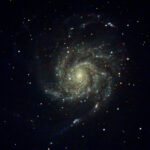 |
Arp 26 / M101 / Pinwheel Galaxy | Spiral galaxies with one heavy arm | 2025-03-18 22:53:00 | This is a Méchain discovery dated March 27, 1781. No formal recording date is noted for M101 nor for any remaining entries in the Catalog: "Nebula without star, very obscure & pretty large, of 6 or 7 minutes [of arc] in diameter, between the left hand of Bootes & the tail of the great Bear [Ursa Major]. It is difficult to distinguish when one lights the [graticule] wires." Halton Arp selected M101 for his Atlas of Peculiar Galaxies based on "one heavy arm" <--> This is a favorite target to which I've returned many times. Featured image is a recent capture with my new ASI2600mc-pro camera, my first outing with that camera and the EdgeHD. This was the same night as my recent capture of M81, but transparency had worsened. Fourth image in the gallery was a July 2023 observation (compared to yet another recent one) to show supernova SN 2023ixf, which had been discovered on May 13, 2023. |
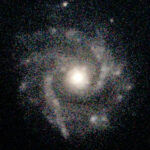 |
Arp 27 / NGC 3631 | Spiral galaxies with one heavy arm | 2024-04-22 00:57:00 | This was a very challenging observation due to a 93% moon and high clouds; it took over an hour to capture 26m of data due to SharpCap's brightness filtering. In the event, I was very pleased with the quality of the capture despite the noise: the large arm is clearly visible. This is a charming spiral galaxy, largely symmetrical, with the one lower arm extended. With its compact diameter and apparently dense disc, it resembles a miniature Fireworks Galaxy. |
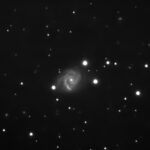 |
Arp 28 / NGC 7678 | Spiral galaxies with one heavy arm | 2024-10-26 19:44:00 | This looks like a lovely, face-on spiral galaxy that is clipped a bit flat along the full length of the right side, and oddly expanded on the left. One can imagine another galaxy making a close approach to Arp 28 from the upper right, stripping off stars (though you can still see something close to Arp 28's original spiral shape in the faint dust cloud that remains). This hypothetical galaxy, as it continues past, then seems to have swung to the lower left (from our perspective) pulling open the main spiral arm of Arp 28, and drawing off more stars from the periphery. Arp categorizes this as having a single, heavy arm, though one could easily argue it has two, both on the lower left of this image. Either way, it's a lovely, intriguing target. |
 |
Arp 29 / Fireworks Galaxy / C12 | Spiral galaxies with one heavy arm | 2022-11-26 09:38:00 | As is often the case with Arp, there's some ambiguity about which is the "heavy" arm, though I believe it's the one towards the bottom of the frame. My Evolution telescope had a mirror diagonal in the image train; the image was flipped in the comparison to Arp's capture. This was literally the first, successful capture of a faint Galaxy in my EAA career. There had been a painful learning curve leading to this point: I was required to capture both darks and flat frames. It was also my second attempt; two days earlier I had captured the galaxy but the focus was horribly off. This capture was my personal, "I love this!" moment. I had no notion of Arp at the time, but in retrospect, this experience started me on the path to the Arp Challenge because this is when I learned that challenging targets are the most fun. I've added to the gallery a "bonus" image of Arp 29 and the open cluster NGC 6939, imaged with my 600mm refractor in August 2023. |
 |
Arp 30 | Spiral galaxies with one heavy arm | 2025-06-30 00:33:00 | Arp placed this target in the "Spiral galaxies with one heavy arm". His remarks aren't fully consistent with this category, and state:: "Comp[anion] appears physically connected to flat-on spiral system". My own interpretation is that this is indeed a 2-galaxy system, with the "heavy arm" being an edge on spiral galaxy physically connected to the "flat-on" spiral. |
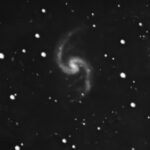 |
Arp 31 / IC 167 | Integral sign spiral galaxies | 2025-10-26 22:44:00 | Arp 31 is the first in the Atlas in a category for "integral sign" galaxies. Interestingly, the galaxy currently nicknamed the "integral sign" galaxy, UGC 3697, isn't one of them. Arp's remarks state, "High surface brightness irregularity is 5' N". North is roughly "right" in the image. I presume Arp is calling out the bright "kink" where the lower arm straightens out and descends vertically. |
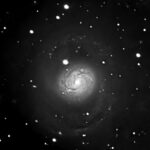 |
Arp 37 / M77 Revisit | Spiral galaxies with low surface brightness companion on arms | 2025-10-27 00:03:00 | This is actually a very challenging observation because the nucleus is so bright, and the outer rings are so dim. I ended up adding a UV/IR cut filter to reduce near infrared light from nucleus, which helped a little. Then post processing to recover the center. MESSIER COMMENTS: Recorded December 17, 1780: "Cluster of small stars, which contains some nebulosity, in Cetus & on the parallel of the star Delta, reported of the third magnitude, & which M. Messier estimated to be hardly of the fifth. M. Méchain saw this cluster on October 29, 1780 in the form of a nebula." Interesting... Messier didn't see the nebula. Just a cluster of stars on top? Was his eyesight starting to fail? |
